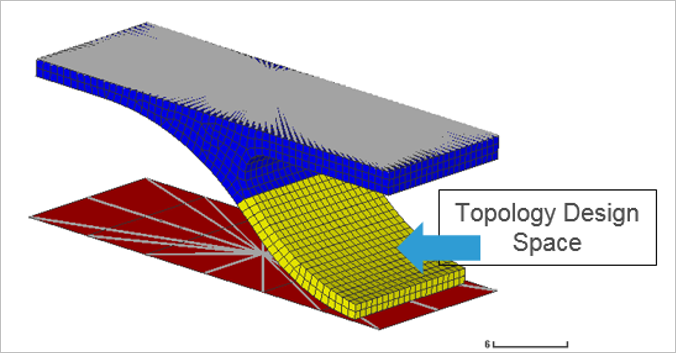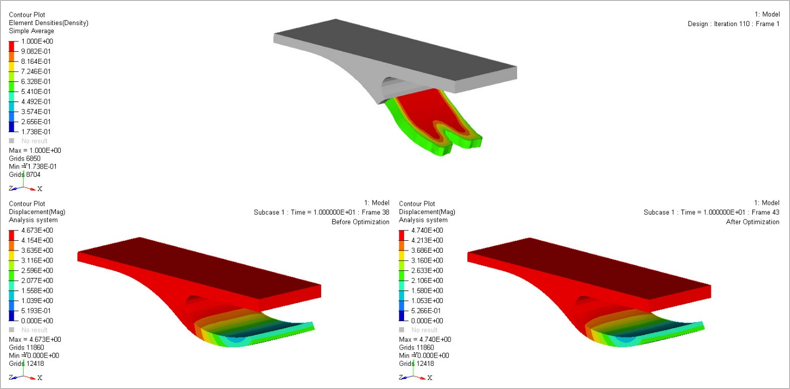OS-E: 0850 V-Bracket using RADOPT
Demonstrates topology optimization of a V-bracket with RADOPT technique, using OptiStruct. RADOPT is Radioss optimization using OptiStruct. The equivalent static load method (ESLM) is used to perform the optimization run here.

Model Files
Before you begin, copy the file(s) used in this example to
your working directory.
Model Description
Conduct a topology optimization of the V-bracket which is undergoing a compression loading
(force applied in negative Y-direction), and the design space (yellow) in Figure 1.
- FE Model
- Elements Types
- HEXA
The linear material properties are:
- MAT1
- Young’s Modulus
- 2.1E5 MPa
- Poisson's Ratio
- 0.3
- Density
- 7.9E-9

